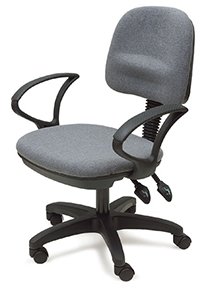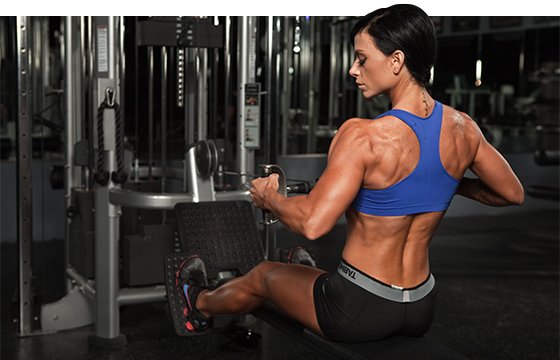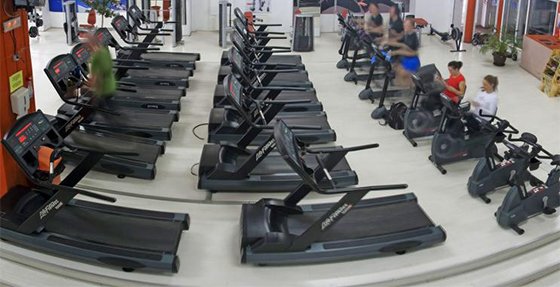
I'm going to go out on a limb and say that there's a decent chance you're reading this while you're supposed to be working—caught you! What's more, if you are working, I bet you're sitting right now—just like you were an hour ago, and just like you will be for the next couple of hours until you pack your belongings for the day.
Even then, you will sit some more in your car to drive home in time to sit down for dinner. Then, you'll sit on your couch, floor, or deep in that favorite chair for the rest of the evening.
I hope there's been a link somewhere among the news stories and gifs circulating your office about the downside of spending so much time parked on your can. Sure, there are increased rates of obesity and its accompanying health markers, but other studies have scarily linked time-spent-sitting to mortality from all causes, regardless of subjects' physical activity in leisure time. The takeaway is that sitting around for hours and hours is simply bad for you, and you need to do whatever you can to mitigate its effects.
Step one: sit as little as possible. Well, duh. Step two: be more strategic in the way you work out. Even though we can't always say exactly why sitting is killing you, a good trainer can screen you and see how and where it makes you physically weak. Here are some of my favorite tweaks to add to your fitness toolbox to combat your career as a desk jockey.
1. Train standing more than seated
This one should be a no-brainer, but many of us continue to perform seated movements at the gym. You spend more than enough time sitting around all day; the least you could do is give your rear a break for a short while. Performing an exercise in the seated position has its place in any training program, but the majority of the hour should be spent on your feet. Seated military press? Do it from the standing position, but make sure you squeeze your glutes and tuck your pelvis under you to take the stress off your back.
2. Be nice to your hip flexors
You know that tight, pinching feeling you get when you dig your fingers into the crease of your hips? Those are your hip flexors, and they're pissed. The human body is built to spend much of the day walking, not sitting, so a sedentary job will inevitably tighten the hip flexors and leave them in an overactive—not to be confused with strong—state.
This affects your posture, but it also impacts your exercise form in profound ways, particularly on heavy full-body lifts like squats and deadlifts. Even if you do no other stretching, stretch those hip flexors often. Kelly Starret's couch stretch is one of the best ways to do it:
DON'T GO IN THE PAIN CAVE
Watch The Video - 04:40
Get up every hour and stretch. It only takes a few minutes and you'll feel worlds better.
3. Perform a proper dynamic warm-up
Most people skip it, but it's especially important for the sedentary among us to spend extra time on the warm-up. Turn the glutes on, activate the lower traps, increase your core temperature, and get your entire body feeling mobile and ready for a heavy training session. Movements to consider incorporating into your routine include the side-lying windmill, dynamic hip flexor mobilization, and scapular wall slide. Special attention should also be paid, of course, to individual areas of weakness.
4. Love on the glutes
Your gluteal muscles don't get any benefit from being smashed underneath you on a chair all day. That pressure shuts them down and prevents them from activating and doing their anatomical job. This may not sound like a dire problem, but we're talking about the largest muscle group in the body here. When the glutes are inactive, it places an extraordinary amount of stress on the lower back, which is a quick road to poor posture, poor movement, and potentially serious injuries.
If you're going to get obsessive about one muscle group this year, choose the glutes. Your biceps have had the spotlight long enough; make your bottom a top priority! Hip thrust and glute bridge variations, single leg or double, heavy weight with low reps, lighter weight with high reps—they're all good. Just make sure you push through your heels and drive your knees out, so you actually lift with your glutes and not your lower back.
Don't be afraid to start out lighter with these exercises. Strength will come, but activity is the first priority. Far more important than the weight on the bar is that you squeeze hard and get your glutes firing properly.
5. Pull more than you push
Slouching over a laptop all day is a surefire way to tighten the pecs—not in the good way—and jeopardize shoulder stability. While squatting and benching are incredibly popular in the gym, they don't help counteract this. A steady diet of pulling movements like deadlifts, pull-ups, and row variations help retract the scapula and stabilize the shoulder. These exercises are especially important for desk jockeys; they correct the muscular imbalances and slouching posture encouraged by your professional (and personal) life online.
The answer is to train with a 2:1 pull:push ratio—for every pushing exercise you perform, make sure you do two pulling exercises. Come to think of it, it wouldn't hurt to bump that up to a 3:1 ratio.

6. Don't throw yourself into metabolic conditioning
Don't throw yourself into anything that demands an all-out effort—not yet, anyway.
If you're sedentary most of the time, chances are that some movements don't feel right. Some may even be painful. Overhead pressing and bench pressing are two common examples, but to pick a popular metabolic conditioning (met-con) movement, perhaps you feel the kettlebell swing more in your lower back than in your hamstrings, and you're nervous about moving forward with the explosive movement.
That's OK—well, not really—but there are ways to still have an effective workout despite your limitations. Before you jump in a CrossFit or boot camp class because it looks fun and all your friends are doing it, it might benefit you to figure out first what movements are and are not safe for you to perform. Don't be afraid to regress when necessary. It's worth the extra time to start at an appropriate level and work up from there.
7. Spend less time on the treadmill
This goes for the stationary bike, too. I understand that you probably had a long day at work and it seems like a great idea to kill two birds with one stone by stomping away on the treadmill while catching up on the day's re-runs—er, news. This is fine in small doses. It becomes an issue, however, when every single workout becomes an identical steady-state cardio session.

Unless your goal is to be a sweatier television watcher—and just to be clear, it shouldn't be—you'd benefit from spending more time out on the training floor, and less time in the cardio section.
Of course cardio has its place, but weights—free weights most of all—have the greatest potential to arm your body for the battle against the chair. No matter what level you're currently at, the iron is your ally.
8. Don't work just the mirror muscles
This relates to Fix 4 above, but there's plenty more that gets ignored than just the glutes. And don't pretend you don't know what the "mirror muscles" are: the chest, shoulders, biceps, and to a slightly lesser extent, the abs and quads.
Guys, I'm looking at you here, but ladies are by no means immune from it, either. I know the allure of aesthetics, but as someone trying to lead the charge against weakness caused by sedentary lifestyles, I believe that you are only as strong as the backside of your body. Trust me on this one for a few months. I'm confident you'll agree soon enough.
